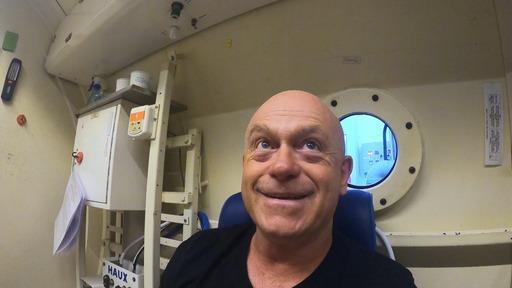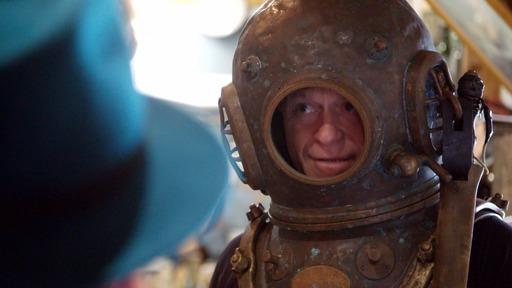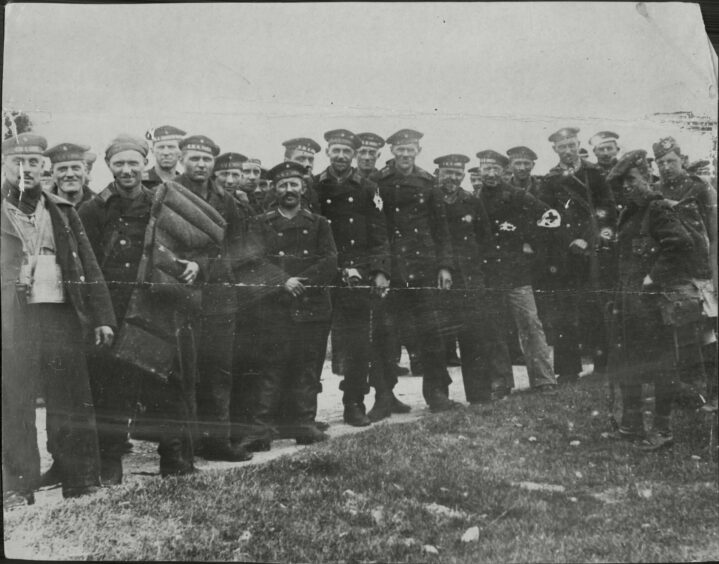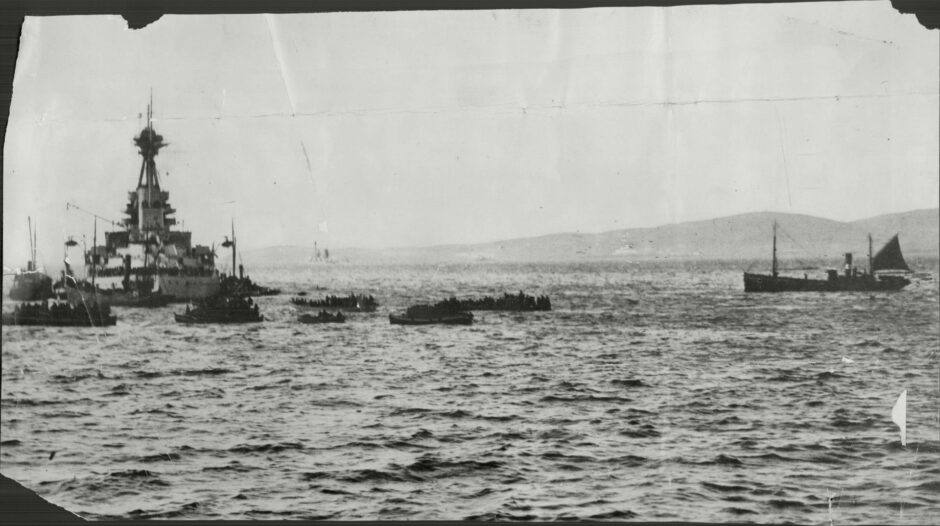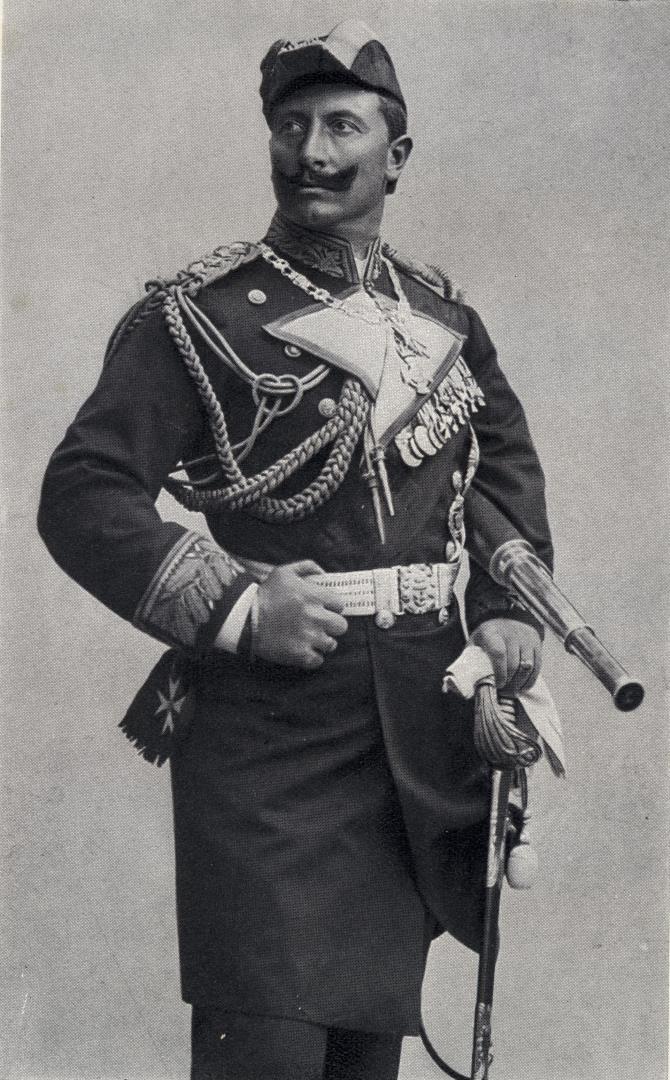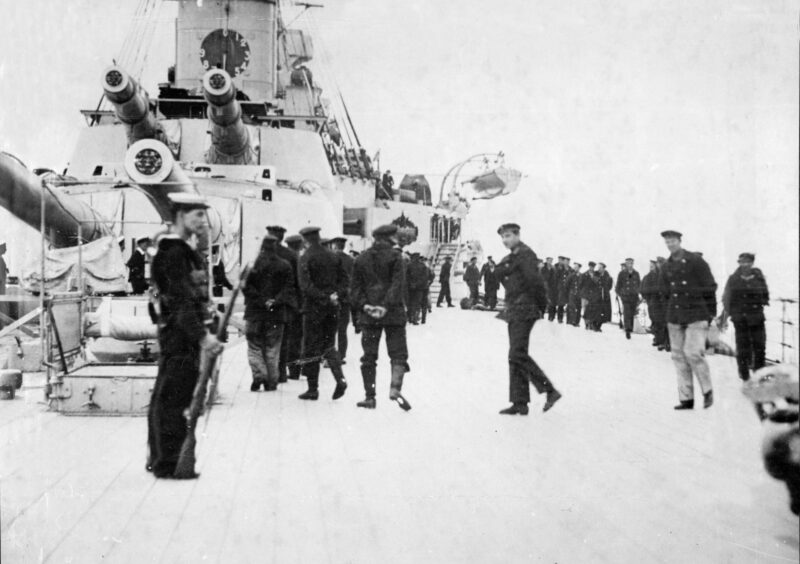The look on Ross Kemp’s face as he surveyed the wreck of the SMS Karlsruhe at Scapa Flow in Orkney spoke volumes about how he had been captivated by investigating the kaiser’s sunken fleet.
The mission to film this astonishingly well-preserved vessel took the former EastEnders actor deep under the water at Scapa Flow in Orkney.
He was there to delve into the history of the German navy’s fateful decision to deliberately scuttle their own fleet rather than allow the ships to fall into British hands at the end of the First World War.
The 57-year-old spent two months doing scuba diving training for Ross Kemp: Shipwreck Treasure Hunter, a fascinating new four-part series that will be screened on the Sky History channel later this month.
Kemp and his colleagues examined at close range the imposing remains of SMS Karlsruhe, a vessel 151 metres long, almost half the height of the Empire State Building, and which was once home to nearly 500 sailors.
He spoke later about the strange sensation of edging back to the past, of feeling the ghosts of the old crew members going about their daily business on the decks and in the conning tower as they faced myriad perils.
Then there was the sight of the massive guns on the vessel, all of which had been rendered inoperable prior to the sinking of the kaiser’s fleet.
Kemp said: “The Karlsruhe was one of the last coal-powered warships but it could cruise at 30mph, which is impressive even by today’s standards.
“It was in a remarkable condition, given the fact it had been down there for more than a century.
“Close up, it was an overwhelming size.”
The German sailors were kept on the vessels for more than seven months throughout an icy-cold Orcadian winter and were often forced to forage for food and fuel and lived in appalling conditions.
Resentment built up, especially after the signing of the Treaty of Versailles in June 1919.
But eventually, they received the message from their commanders – “Paragraph 11” – that ordered the crews to scuttle their ships.
Then, in the space of a single afternoon, more than 50 vessels of the German High Seas fleet were consigned to their watery grave.
The cessation of hostilities wasn’t universally observed after Armistice Day.
Kemp visited one of the cemeteries in Orkney, where there are graves dedicated to nine German sailors who were killed by the Royal Navy while trying to escape amid the tense stand-off in the north of Scotland.
But, for the most part, both sides were weary of the conflict that had claimed so many lives.
The rival navies had not engaged in battle against each other – but some of the more prescient crew members correctly suspected they would be involved in another war somewhere down the line.
As Kemp said: “By disarming their guns, the crew of the Karlsruhe were showing the Royal Navy they had not come to Scapa Flow for a fight.
“Respecting the Armistice, the German fleet came here in peace, but their ships still ended up at the bottom of the sea in 1919.”
Kemp had enormous respect for the professionalism of those who helped him as he was recording the series.
And the documentary paints a poignant picture of this final resting place for seven German warships, including the vast battleship Kronprinz Wilhelm, whose guns can still be seen by divers, and the cruiser Karlsruhe, with its exposed boiler rooms and toppled control tower.
As Kemp said: “Every shipwreck I’ve dived on has had a story to tell, tales that echo from our past into the present.
“They speak to us of bravery, sacrifice, and progress, but also of cruelty and
heartbreak.
“I have discovered the impact which the sea has had, not only on my own family (his great grandfather, ‘Pop’, was in the Merchant Marines during the Second World War and survived being shipwrecked three times), but also on world history.
“It has been challenging and it has been emotional.”
That dedication and determination shines through in this evocative and elegiac programme.
- Ross Kemp: Shipwreck Treasure Hunter will premiere in the UK on Sky HISTORY on April 18 at 9pm.
